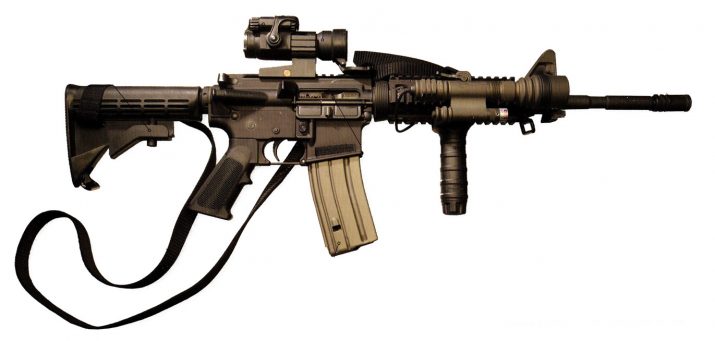The M-4 Carbine: The good, the bad and the ugly
Wednesday, November 25, 2015 by usafeaturesmedia
http://www.bugout.news/2015-11-25-the-m-4-carbine-the-good-the-bad-and-the-ugly.html

(Bugout.news) The ubiquitous M-16/AR-15 model rifles have seen action all over the world, and the gun remains one of the most popular among American gun enthusiasts and those interested in self-defense.
There have been calls in recent years for the military to replace it with something newer and more high tech, but those have rebuffed thus far and in fact, many in the know don’t think the battle-tested rifle is going anywhere anytime soon.
Since the wars in Iraq and Afghanistan, one of the most popular versions of the M-16 has been the shortened carbine version, the M-4, which can come with iron sites like its larger 20-inch-barreled cousin, or a rail system better suited for a scope or other site optics.
Since the rifle remains so popular, with more and more Americans buying their first one each year, we thought it would be appropriate to discuss what is good about the M-4 version, what’s bad about it, and what is downright ugly.
The Good:
In terms of universality, the M-4 is high atop the list of American weapons because it is so pervasive. Besides the military, police departments use them, as do a number of security firms. And with their popularity among the general public, one of the main concerns for any weapons owner – finding ammunition for it – is not a problem.
Also, M-4 versions of the AR/15 family come equipped with collapsible stocks, so they can be adjusted to fit nearly everyone comfortably. In fact, many users like that the rifle is very ergonomic.
And since they are so universal, getting parts and finding add-ons like laser sites, light sets and high-impact magazines is much easer (and the parts generally cheaper than less-common firearms).
Finally the M-4’s range is decent for a smaller self-defense rifle; the carbine version is rated to fire accurately just as far as its larger AR cousin, out to around 300 yards (though with iron sites it is much more difficult to hit targets at that max effective range.
The Bad:
M-4s, like all members of the AR and M-16 family, rely on gas – from the gunpower explosion of firing a round – to cycle the weapon. This process inserts residue into the rifle’s internal parts and, over time, can foul the weapon at really bad times.
One way around this is to keep your weapon clean – but that’s another issue. M-4’s have a number of moving parts and they can be difficult to break down and clean, though after you’ve done it a couple of times it is much easier. Even so, the M-4 can be finicky if its even a little bit dirty – and much more so than its Russian designed counterweight, the AK-47 family of weapons.
The Downright Ugly: About that weapon fouling. In the January issue of The Atlantic, retired Army Maj. Gen. Robert H. Scales slammed the M-4s being utilized by U.S. troops in battle. In particular he cited the 2008 Battle of Wanat, when a Taliban force attacked an American forward operating base (FOB). At several points during the firefight a number of M-4’s failed, costing troops their lives, Scales said.
He also added that he had similar experiences with the first M-16s that were issued to troops fighting in Vietnam. He didn’t care for the weapon then and he doesn’t like it now. He also says the .556 round is too light and unable to penetrate even basic body armor worn by some military foes today.
Now, is there a possibility you might get into some kind of epic firefight with your M-4? Not likely, but of course, anything can happen in today’s topsy-turvy world. So that’s something you should consider.
One way to find out is to take your clean M-4 out to a firing range one day once you’ve been properly instructed in its use, and take several hundred rounds of ammunition with you. Load and fire your M-4 repeatedly, to see how it will perform. Fire all of your ammunition through it (at targets, as if it’s a simulated battle condition) and take stock of how well (or how poorly) your M-4 does. Does it jam at all, and if so, after how many rounds? That’s the only way you’ll know; practice firing slow aimed shots, and practice firing quickly, both when the weapon is still relatively clean and after you’ve put several hundred rounds through it.
There are other variables too, the kind and type of ammunition you’re using (is it relative new? Are you firing “hot” rounds? Are they reloads? Etc.). So keep that in mind.
You’ll know then whether you’ve got a reliable weapon or something you’ll need to improve or replace.
And don’t forget to clean it when you’re finished.
See also:
https://medium.com/war-is-boring/the-m-4-carbine-is-here-to-stay-fe9012f293f4#.7r6chwkn8
http://www.theatlantic.com/magazine/archive/2015/01/gun-trouble/383508/?single_page=true

